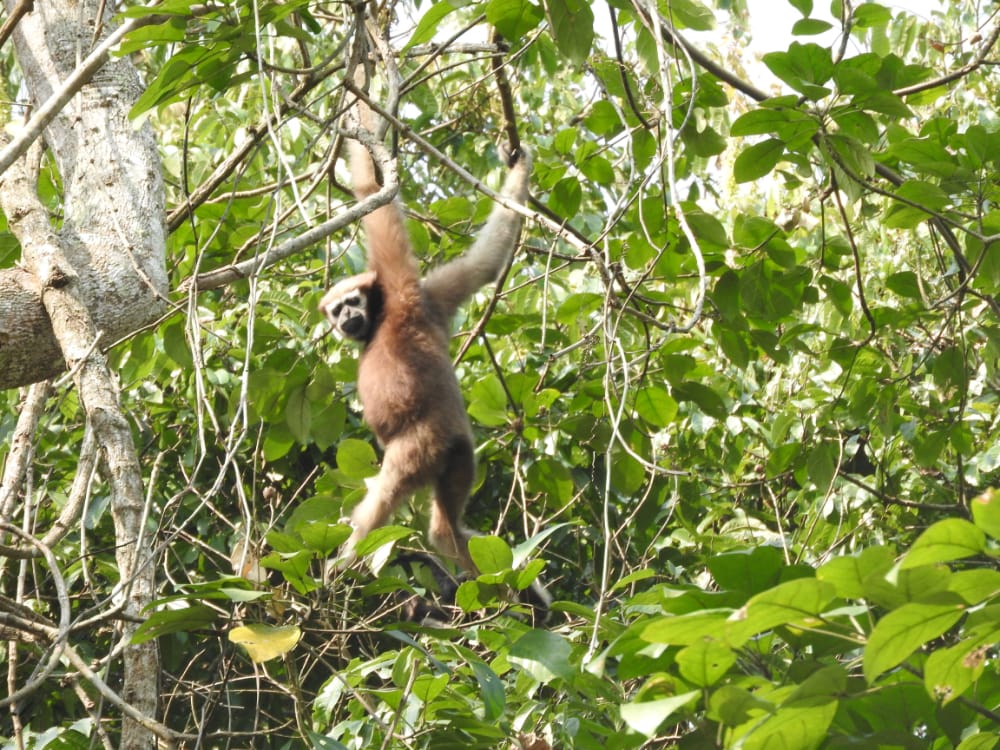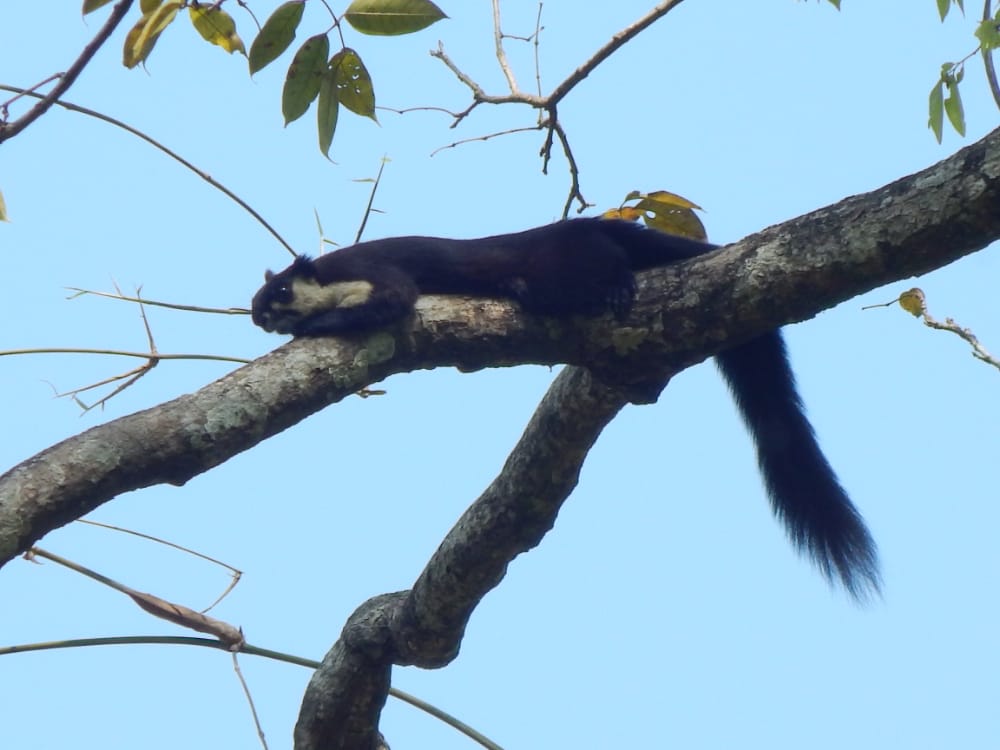Garbhanga Wildlife Sanctuary on:
[Wikipedia]
[Google]
[Amazon]
Garbhanga Wildlife Sanctuary (formerly Garbhanga and Rani Reserve Forest) is a 
 The Garbhanga Wildlife Sanctuary is surrounded by Guwahati City and Dipor Bill in the South, the Meghalayan ranges on the east and north, and Rani Range on the west.
The Garbhanga Wildlife Sanctuary is surrounded by Guwahati City and Dipor Bill in the South, the Meghalayan ranges on the east and north, and Rani Range on the west.
 In earlier days, various NGOs and researchers witnessed rare animals such as
In earlier days, various NGOs and researchers witnessed rare animals such as
 The wildlife sanctuary is rich in fauna. A total of 36 species of mammals, 219 species of
The wildlife sanctuary is rich in fauna. A total of 36 species of mammals, 219 species of
wildlife sanctuary
A nature reserve (also known as a wildlife refuge, wildlife sanctuary, biosphere reserve or bioreserve, natural or nature preserve, or nature conservation area) is a protected area of importance for flora, fauna, or features of geological or o ...
on the southwestern side of Guwahati City, bordering the state of Meghalaya
Meghalaya (, or , meaning "abode of clouds"; from Sanskrit , "cloud" + , "abode") is a state in northeastern India. Meghalaya was formed on 21 January 1972 by carving out two districts from the state of Assam: (a) the United Khasi Hills and J ...
, India
India, officially the Republic of India (Hindi: ), is a country in South Asia. It is the seventh-largest country by area, the second-most populous country, and the most populous democracy in the world. Bounded by the Indian Ocean on the so ...
. The forested area is the key urban wildlife site and catchment area near Guwahati City.
Located approximately 15 km (10 miles) away from Guwahati, Garbhanga Wildlife Sanctuary is situated in the southern part of Assam
Assam (; ) is a state in northeastern India, south of the eastern Himalayas along the Brahmaputra and Barak River valleys. Assam covers an area of . The state is bordered by Bhutan and Arunachal Pradesh to the north; Nagaland and Manipur ...
, bordering the foothills of Meghalaya
Meghalaya (, or , meaning "abode of clouds"; from Sanskrit , "cloud" + , "abode") is a state in northeastern India. Meghalaya was formed on 21 January 1972 by carving out two districts from the state of Assam: (a) the United Khasi Hills and J ...
. It is located very close to the Deepor Bill, and because of its location in an urban area
An urban area, built-up area or urban agglomeration is a human settlement with a high population density and infrastructure of built environment. Urban areas are created through urbanization and are categorized by urban morphology as cities ...
it is considered a key wildlife area of Guwahati City.
Garbhanga Wildlife Sanctuary has a total land area of 117 km2 and lies between the Garbhanga and Rani ranges. 
Etymology
The origin of wildlife sanctuary's name is unclear. However, some believe that the name comes from the Karbi people, who came from the Markang area of Sonapur and eventually entered the hilly forest forJhum cultivation
Slash-and-burn agriculture is a farming method that involves the cutting and burning of plants in a forest or woodland to create a field called a swidden. The method begins by cutting down the trees and woody plants in an area. The downed veget ...
.
Garbhanga was declared a wildlife sanctuary by the second secretary to the government of Assam, Mr G.T. Lloyd. He was under the supervision of Major Briggs, who surveyed the forest in 1862.
Brief boundary description
 The Garbhanga Wildlife Sanctuary is surrounded by Guwahati City and Dipor Bill in the South, the Meghalayan ranges on the east and north, and Rani Range on the west.
The Garbhanga Wildlife Sanctuary is surrounded by Guwahati City and Dipor Bill in the South, the Meghalayan ranges on the east and north, and Rani Range on the west.
North
The northern boundary starts at BSF headquarters near the VIP Road, then runs along the foothills of Matia, Chakradeo, Dipor Bil, Mahua Para, Pamohi, and Mainakhurung up to Paschdhora River, which is the common boundary between Garbhanga Reserve Forest and Rani Reserve Forest. From there, the boundary runs along Phalbama, Nawagaon, and Nalapara, up to Lokhara Village and to the Siva Temple, which is situated in the northeast corner.East
On the east side, the boundary runs along the Basistha river, up to the front side of the Government Art School and then follows the stream. Permanent boundary pillars are situated near the Basistha River, then the eastern boundary runs up to Umthana Forest Camp. The name of the river changes in different locations, such as Umsing, Umpani, Umrit etc. This entire stretch is the interstate boundary withMeghalaya
Meghalaya (, or , meaning "abode of clouds"; from Sanskrit , "cloud" + , "abode") is a state in northeastern India. Meghalaya was formed on 21 January 1972 by carving out two districts from the state of Assam: (a) the United Khasi Hills and J ...
.
South
The southern boundary starts at Doomati village, which is the joining point of Umrit and Umsopari rivers. From there, the boundary runs up to Pathar Khama, then up to Rangang River that runs out from Meghalaya.West
The western boundary starts at Pathar Khama, then goes up Jeepable Fair Weather Road along the Umsang River. From this point the boundary runs along Naharpaham, Bhadiakhowa, where it meets Umtru River, and then the boundary follows the stream to where it meets Kapili river. The boundary then runs along Ganapati, Rani, Bahupara, Andherijuli, Rani Tea estate, Sajanpara, Patgaon, to where it meets at the starting point at the corner of BSF Headquarters.Landscape and biodiversity
 In earlier days, various NGOs and researchers witnessed rare animals such as
In earlier days, various NGOs and researchers witnessed rare animals such as serow
The serows ( or ) are four species of medium-sized goat-like or antelope-like mammals of the genus ''Capricornis''. All four species of serow were until recently also classified under ''Naemorhedus'', which now only contains the gorals.
Extant ...
, clouded leopard, and bison and wanted to study Garbhanga. Therefore, when the Working Plan of the Kamrup East Division was prepared, an attempt was made to document the faunal and flora diversity of Garbhanga and Rani Reserve Forest.
Flora
The wildlife sanctuary has diverse flora. A study has found 139 species oftree
In botany, a tree is a perennial plant with an elongated stem, or trunk, usually supporting branches and leaves. In some usages, the definition of a tree may be narrower, including only woody plants with secondary growth, plants that are ...
s, 122 herbs and shrubs, 52 species of climbers, 11 species of orchid
Orchids are plants that belong to the family Orchidaceae (), a diverse and widespread group of flowering plants with blooms that are often colourful and fragrant.
Along with the Asteraceae, they are one of the two largest families of flowerin ...
s, and five species of bamboo
Bamboos are a diverse group of evergreen perennial flowering plants making up the subfamily Bambusoideae of the grass family Poaceae. Giant bamboos are the largest members of the grass family. The origin of the word "bamboo" is uncertain, ...
and rattan
Rattan, also spelled ratan, is the name for roughly 600 species of Old World climbing palms belonging to subfamily Calamoideae. The greatest diversity of rattan palm species and genera are in the closed- canopy old-growth tropical fores ...
were documented.
Fauna
 The wildlife sanctuary is rich in fauna. A total of 36 species of mammals, 219 species of
The wildlife sanctuary is rich in fauna. A total of 36 species of mammals, 219 species of bird
Birds are a group of warm-blooded vertebrates constituting the class Aves (), characterised by feathers, toothless beaked jaws, the laying of hard-shelled eggs, a high metabolic rate, a four-chambered heart, and a strong yet lightweig ...
s, 38 species of reptiles, 15 species of amphibians, 168 species of butterflies, and 15 species of spider
Spiders ( order Araneae) are air-breathing arthropods that have eight legs, chelicerae with fangs generally able to inject venom, and spinnerets that extrude silk. They are the largest order of arachnids and rank seventh in total species ...
s have been documented.
Disturbance and threats
In May 2005, at the 15th Annual Meeting of Early Bird, a local NGO warned the Assam government about the danger of losing the wildlife sanctuary in the future. The main threats to wildlife are encroachment, dumping of garbage, anddeforestation
Deforestation or forest clearance is the removal of a forest or stand of trees from land that is then converted to non-forest use. Deforestation can involve conversion of forest land to farms, ranches, or urban use. The most concentrated ...
.
The NGO requested that the government prevent the encroachment on wild animals and also called for a ban on the dumping of garbage in the wetlands.
Present status
Groups have been constantly demanding the upgrading of Garbhanga-Rani Reserved Forests into a wildlife sanctuary for its better protection and care. * Hydrological considerations - Protection of the watershed areas of Guwahati city and its adjacent areas would regulate water flow, maintain water quality and nutrient cycles, and prevent soil erosion and sedimentation. * Genetic and species considerations - Protection of wild gene pools of flora and diverse avian, mammalian, reptilian, and other fauna. * Ethnobotanical considerations - Protection of medicinal plants traditionally used by tribal communities residing in and around the forested areas. * Economic considerations - Protection and maintenance of the areas with high scenic value for eco-tourism, which would provide economic opportunity to ethnic tribal inhabitants.Declared a wildlife sanctuary
On 7 April 2022, in theAssam Gazette
The ''Assam Gazette'' is a public journal of the Government of Assam published weekly by the Department of Stationery and Printing. As a public journal, the ''Gazette'' prints official notices from the government. The gazette is printed by the ...
, the governor of Assam
This is a list of governors of Assam, and other offices of similar scope, from the start of British occupation of the area in 1824 during the First Anglo-Burmese War.
The Governor of Assam is a nominal head and representative of the President ...
proposed that Garbangha Reserved Forest should be declared a wildlife sanctuary
A nature reserve (also known as a wildlife refuge, wildlife sanctuary, biosphere reserve or bioreserve, natural or nature preserve, or nature conservation area) is a protected area of importance for flora, fauna, or features of geological or o ...
, which made it the 25th wildlife sanctuary in Assam.
References
{{DEFAULTSORT:Wildlife Sanctuary, Garbhanga Tourism in Northeast India Tourism in Assam Geography of Assam Important Bird Areas of India Biosphere reserves of India Biodiversity